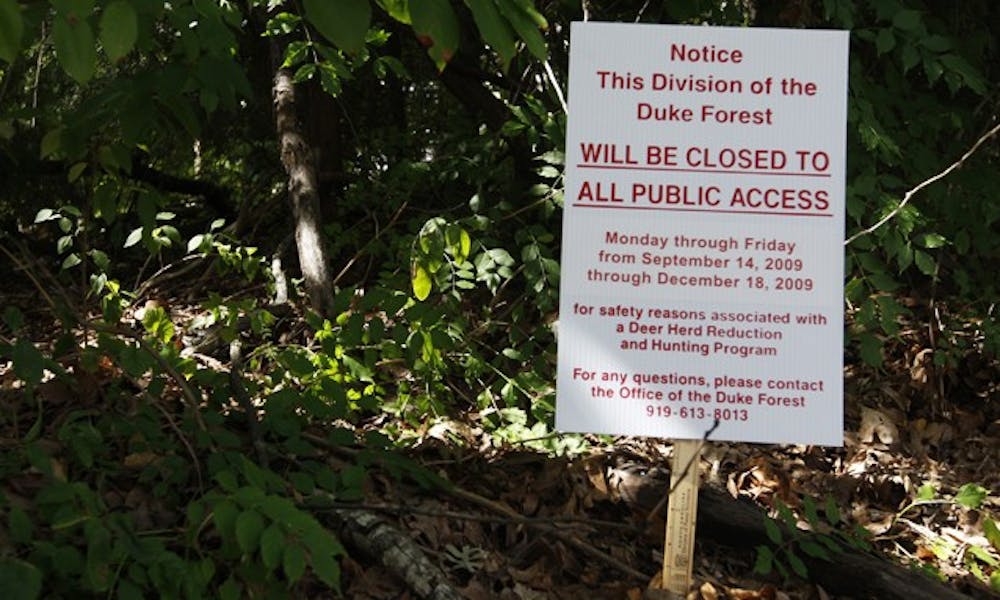Duke Forest will permit deer hunting for the second year to control deer overpopulation as part of a program organized by the North Carolina Wildlife Resources Commission.
Four out of six sections of the forest will be closed to the public Monday through Friday from Sept. 14 to Dec. 18 for the hunt, called the Deer Management Assistance Program.
A 2005 study reported a density of 30 to 40 deer per square mile, with up to 80 per square mile in certain areas of the forest. The recommended density is 15 to 20 deer per square mile, said Marissa Hartzler, Duke Forest program coordinator.
“By anyone’s reckoning, there is a very obvious problem with deer overpopulation,” said Norman Christensen, professor of ecology and founding dean of the Nicholas School of the Environment.
He added that there are hundreds, and likely thousands, of deer roaming the forest, consuming, almost to extinction, some important species of herbs.
About 75 deer were killed in last year’s hunt and more will likely be killed this year because the hunting area has been increased and more hunters will be involved, said Judson Edeburn, Duke Forest resource manager.
Hunting on Fridays was not allowed last year, but will be permitted this year, Edeburn said. Meat that is not consumed by the hunters will be donated to organizations that feed the needy, he added.
The hunt will be conducted by two private groups with liability insurance and rigorous training, Hartzler said, noting that contracts with these groups were signed last year. Only hunters approved by Duke Forest will be allowed to participate, she added.
“Last year was very successful, and we had no safety issues whatsoever,” Hartzler said.
Hartzler said research being conducted in the forest will not be affected by the hunt. Researchers and teachers must notify the Duke Forest office before entering so that hunters will be aware of the presence of people. Hunters are also required to keep away from roads and trails, and warning signs will be posted at entrances to the forest.
Other problems caused by deer overpopulation include car collisions and an increased risk of tick-borne diseases. Some people who live near the forest have also complained of deer invading their backyards, Hartzler said
It is disputed whether larger numbers of deer pose a greater threat of Lyme disease, since researchers have found that the tick-borne illness is more prevalent in small mammals such as mice, Christensen said. He added that there is no doubt that deer can carry tick-borne diseases, most notably Rocky Mountain spotted fever.
But for Christensen, the main concern about the program is whether it will really control overpopulation.
“One concern is that if we reduce the size of the population inside the Duke Forest, deer from outside the forest will quickly fill the void,” he said.
Senior Aaron Sandel, former president of Duke Students for the Protection of Animals, said the deer should not be killed for moral reasons.
“Humans are overpopulated and causing damage to our environment, but I don’t think that justifies killing humans,” he said. “So, either overpopulation is not an excuse to kill deer, or we have to justify how humans are morally different from deer.”
Get The Chronicle straight to your inbox
Signup for our weekly newsletter. Cancel at any time.

